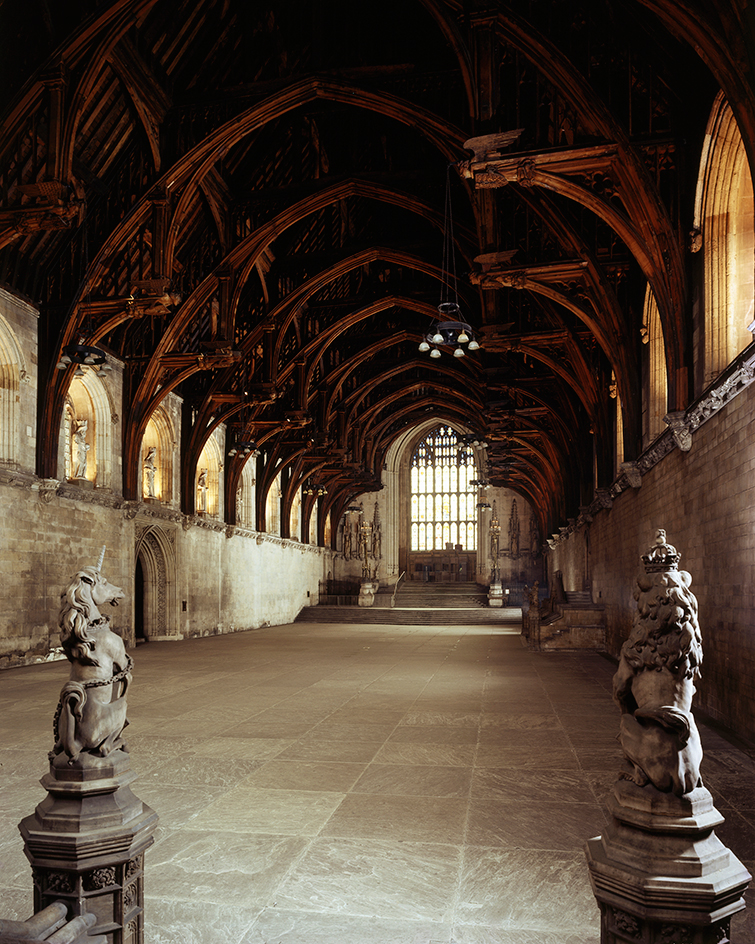Westminster Hall is a historic building in London. It is the oldest surviving part of the Palace of Westminster, which houses the Parliament of the United Kingdom. Westminster Hall is one of the largest halls in Europe with a hammerbeam roof (high roof supported by exposed wooden arches). The hall is about 240 feet (73 meters) long, 68 feet (21 meters) wide, and 92 feet (28 meters) high.

Westminster Hall was constructed from 1097 to 1099 during the reign of William II. In 1394, Richard II replaced the original roof with the hammerbeam roof. The hall survived a fire in 1834 that destroyed most of the rest of the palace. During World War II (1939-1945), German bombs destroyed part of the House of Commons but did not damage Westminster Hall. A terrorist bomb slightly damaged the hall in 1974.
Many important events in British history took place in Westminster Hall. Courts met in the hall until 1826, when new court buildings were completed. Sir Thomas More, the Earl of Strafford, and Warren Hastings each stood trial in Westminster Hall. In 1649, King Charles I was tried and condemned to death there.
More recently, Westminster Hall has been used by visiting heads of state to address the combined houses of Parliament. The hall has also been the place where members of the royal family or senior politicians have lain in state before their funeral. Since November 1999, a room off the main hall has housed the second debating chamber of the House of Commons.
